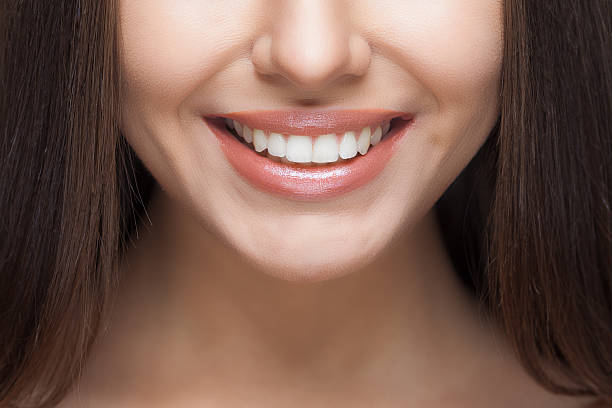I. Introduction
Teeth are an integral part of our daily lives, yet their significance often goes unnoticed until problems arise. A bright smile not only enhances our confidence but also mirrors our overall health. In this comprehensive guide, we’ll delve into the intricate world of teeth, exploring their anatomy, development, joint issues, and the best ways to maintain optimal oral health.
II. The Anatomy of Teeth
Teeth are marvels of nature, comprising several layers designed for specific functions. The outermost layer, enamel, shields the tooth from decay caused by acids and plaque. Beneath it lies dentin, a sensitive tissue that transmits signals to the pulp, the innermost part of the tooth housing nerves and blood vessels. Different types of teeth—incisors, canines, and molars—have specialized roles, from cutting and tearing to grinding food for digestion.
III. The Development of Teeth
Understanding the journey of tooth development is crucial. It begins in infancy, as baby teeth, also known as deciduous teeth, form even before birth. As children grow, proper dental care is essential to ensure these primary teeth pave the way for healthy adult teeth. Pediatric dentists emphasize the significance of early dental visits, emphasizing the importance of teaching children good oral hygiene habits from a young age.

IV. Maintaining Healthy Teeth
Maintaining healthy teeth is the cornerstone of a beautiful smile and robust oral health. It isn’t an intricate puzzle; instead, it’s a practice rooted in simple yet effective habits. Here’s a closer look at the critical components of maintaining dental wellness:
1. Daily Oral Hygiene Routine:
Brush teeth twice daily with fluoride toothpaste & soft brush. Brush tongue & roof of mouth too. Morning brush refreshes, bedtime brush removes plaque.
Tip: Invest in an electric toothbrush. Its oscillating bristles often do a better job of cleaning teeth and gums than manual brushing.
Flossing is equally vital. Dental floss reaches where toothbrush bristles can’t—between teeth and along the gumline. Daily flossing removes plaque and food particles, preventing the formation of cavities and gum diseases.
Tip: If traditional floss is challenging to use, consider interdental brushes, water flossers, or floss picks for more accessible and effective cleaning between teeth.
2. Mindful Diet Choices:
A balanced diet rich in calcium strengthens tooth enamel, making it more resistant to decay. Incorporate phosphorus-rich foods like fish, eggs, and lean meat, as phosphorus and calcium work synergistically to protect and rebuild tooth enamel.
Tip: Crunchy fruits and vegetables like apples, carrots, and celery act as natural toothbrushes, stimulating saliva production and cleaning the teeth’s surfaces.
Minimize sugary and acidic foods and beverages. Sugars fuel harmful bacteria in your mouth, leading to acid production that erodes tooth enamel, causing cavities. Acidic foods and drinks like citrus fruits and sodas can directly wear down enamel, making teeth more vulnerable to decay.
3. Avoid Harmful Habits:
a. Tobacco Products: Smoking and smokeless tobacco stain teeth, cause bad breath and significantly increase the risk of oral cancers. Quitting tobacco products not only improves your oral health but also enhances your overall well-being.
b. Limit Alcohol Intake: Excessive alcohol consumption can lead to dry Limit alcohol intake to maintain oral balance and saliva production for neutralizing acids and washing away food particles.
4. Regular Dental Check-ups:
Even with meticulous oral hygiene, regular dental check-ups are non-negotiable. Dentists can detect issues early, Our personalized oral care practice includes professional cleaning to effectively remove plaque and tartar, followed by customized advice for maintaining your oral health.
Tip: Consider dental sealants, a protective coating applied to the chewing surfaces of back teeth. Bonds create a smooth surface that’s easy to clean and prevents decay in the deep grooves of molars and premolars, especially in children.
By integrating these habits into your daily routine and embracing regular dental check-ups, you not only preserve your smile’s radiance but also invest in long-term oral health. Remember, a little dedication to your oral care today ensures a lifetime of confident smiles tomorrow.

V. Common Dental Problems
Tooth decay, a prevalent issue, can be recognized by symptoms such as toothaches, sensitivity, and visible cavities. Preventive measures, including fluoride treatments and dental sealants, act as shields against decay. Gum diseases, like gingivitis and periodontitis, often result from poor oral hygiene. Regular dental cleanings and deep scaling treatments can halt their progression, preserving both teeth and gums.
VI. Dental Procedures and Treatments
Dental professionals employ a range of procedures to address various issues. Routine cleanings remove tartar buildup, while fillings restore decayed teeth. In cases of severe damage, extractions become necessary. Cosmetic dentistry enhances smiles through teeth whitening and veneers, while restorative dentistry repairs missing or damaged teeth using crowns, bridges, or implants—orthodontic treatments, such as braces and Invisalign, correct misalignments for both aesthetic and functional purposes.
VII. Dental Care Across Ages
Oral health needs vary throughout life. Children require guidance on proper brushing techniques, teenagers may need braces, and adults often consider cosmetic treatments. Seniors face unique challenges, including dry mouth and tooth loss. Tailored dental care at every stage of life ensures a lifetime of healthy smiles.
VIII. The Connection Between Oral Health and Overall Health
Oral health and overall well-being are intertwined. Research reveals links between gum disease and conditions like diabetes and heart disease. Moreover, poor oral health can affect mental health, leading to decreased self-esteem and social withdrawal. Regular dental check-ups not only preserve teeth but also contribute to a healthier body and mind.

IX. Dental Care Technologies
Advances in dental technology have revolutionized oral care. Digital imaging enables precise diagnoses, reducing radiation exposure. Laser dentistry offers minimally invasive treatments, ensuring faster recovery times. The future promises even more innovations, paving the way for painless, efficient, and accessible dental care for all.
X. Teeth – Conclusion
In this exploration of teeth, we’ve uncovered the secrets to a lifetime of healthy smiles. By understanding their anatomy, development, and joint issues and by embracing proactive oral hygiene, we can empower ourselves and future generations with solid and beautiful teeth. Remember, your smile is not just a reflection of your dental health but also a testament to your overall well-being.
XI. Teeth (FAQ)
Q1. How often should I visit the dentist?
Regular dental check-ups are recommended every six months. However, individuals with specific dental issues may need more frequent visits.
Q2. Are there natural ways to whiten teeth?
While professional dental treatments are the most effective, some natural methods, like baking soda and hydrogen peroxide paste, can help whiten teeth mildly. However, consult a dentist before trying any home remedies.
Q3. What can I do about sensitive teeth?
Sensitive teeth can be managed by using desensitizing toothpaste, avoiding acidic foods and drinks, and maintaining good oral hygiene. If the problem persists, consult a dentist for proper diagnosis and treatment.
Q4. How can I prevent cavities in children?
Preventing cavities in children involves a combination of regular dental check-ups, a balanced diet, proper oral hygiene practices, and dental sealants. Limiting sugary snacks and drinks also plays a significant role in cavity prevention.
Q5. Is it essential to floss every day?
Yes, flossing daily is crucial as it removes plaque and food particles from between the teeth and along the gumline, areas where a toothbrush cannot reach effectively. Flossing helps prevent cavities and gum diseases.
By following this guide and consulting a dental professional for personalized advice, you can embark on a journey toward excellent oral health and a radiant smile that lasts a lifetime.
Read also Unraveling the Mysteries of Castor Oil: A Comprehensive Exploration

